Alix Lanyon-Taylor
Advisor: Eduard Epp
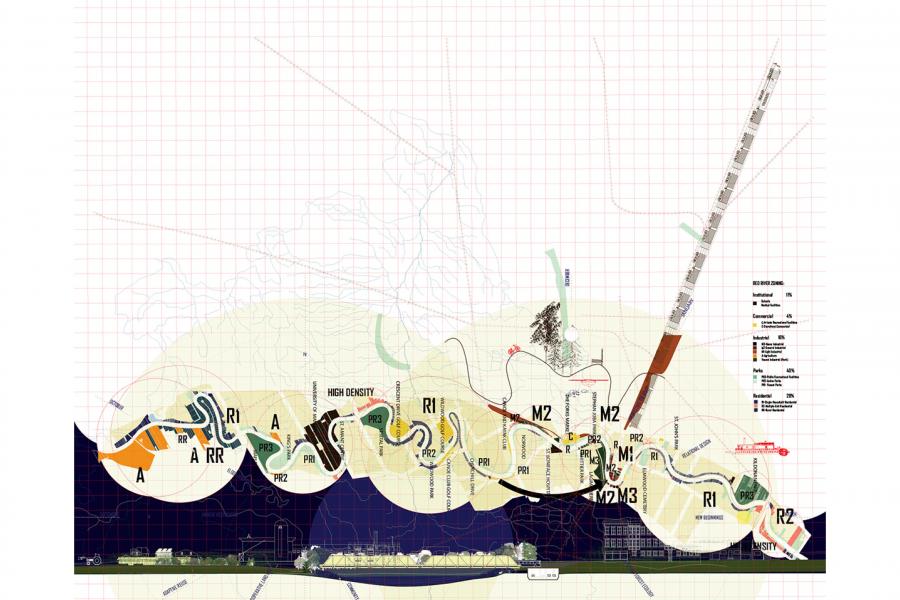
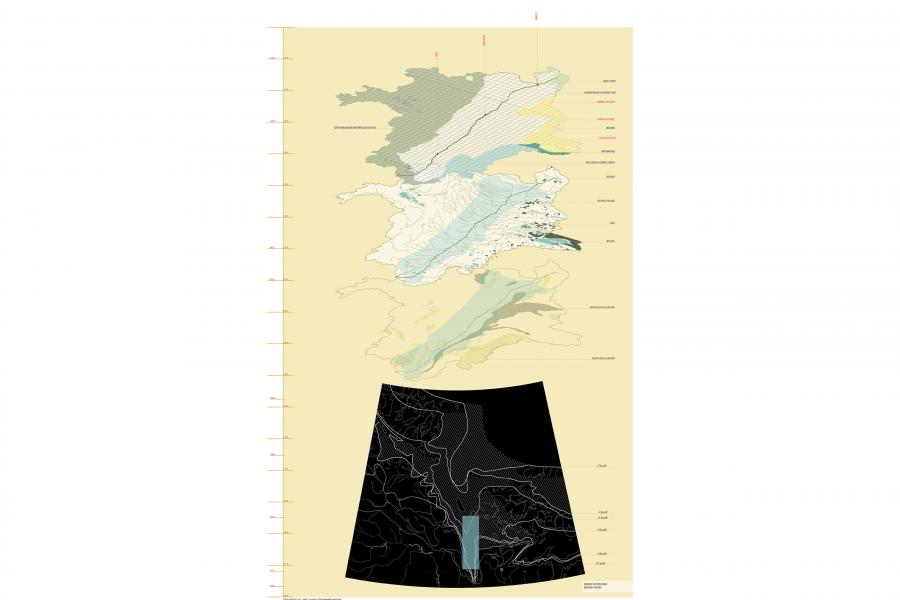

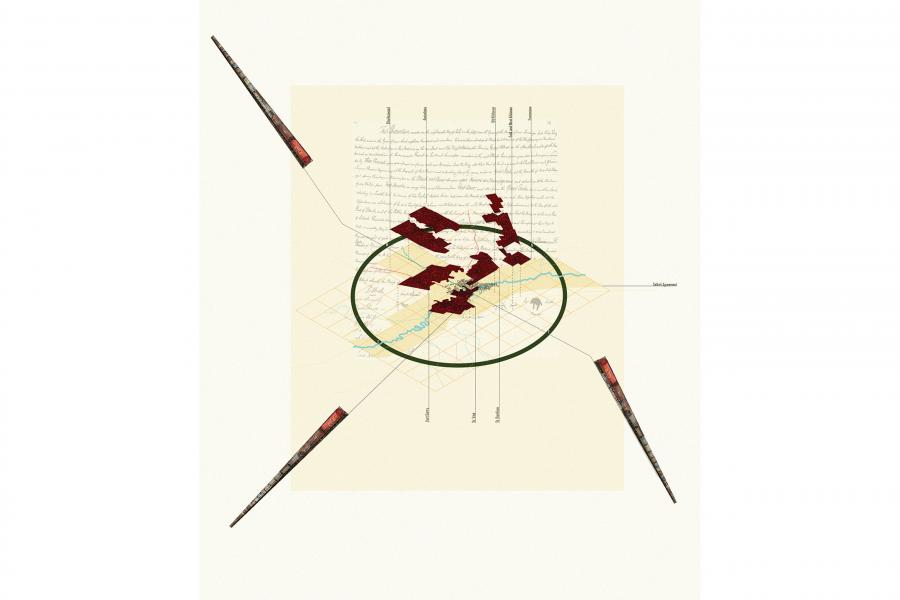
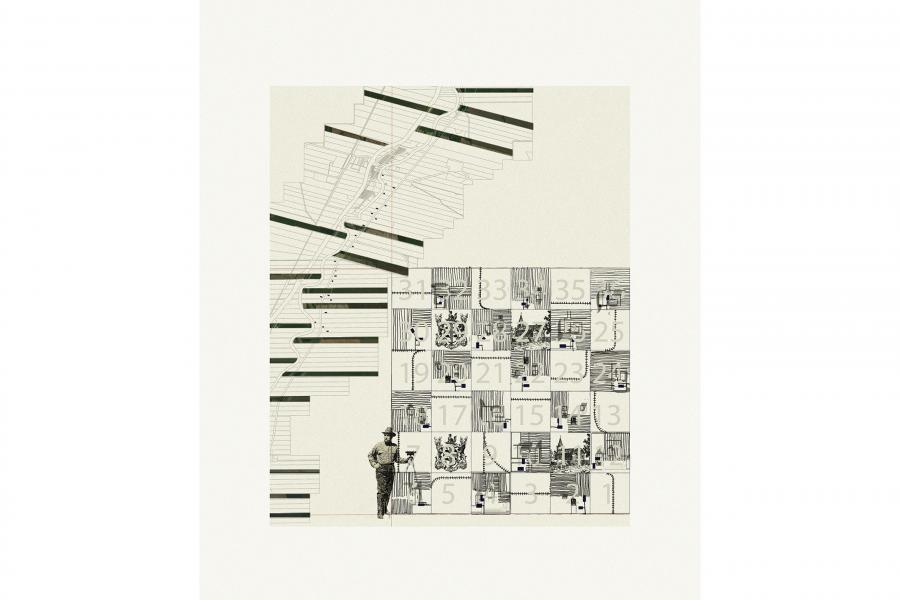
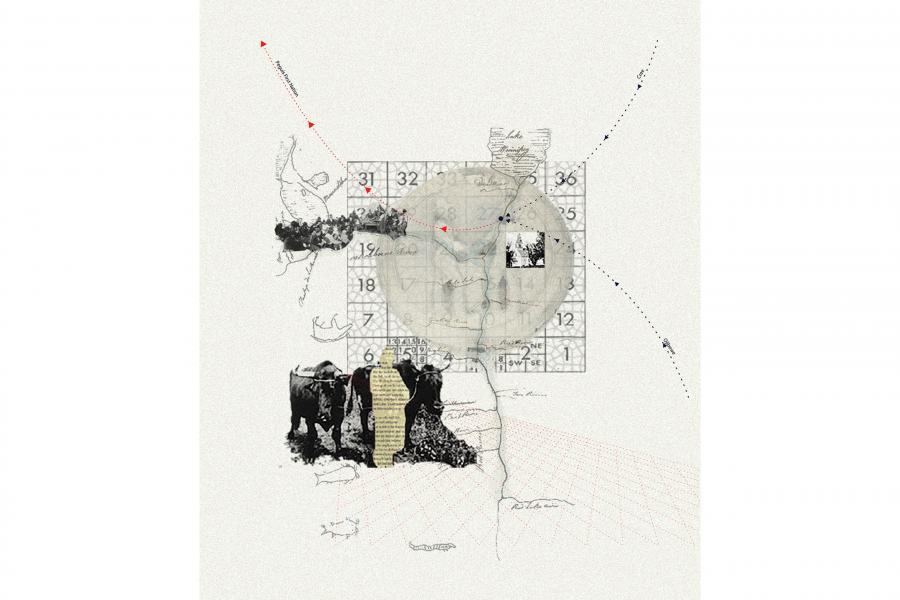
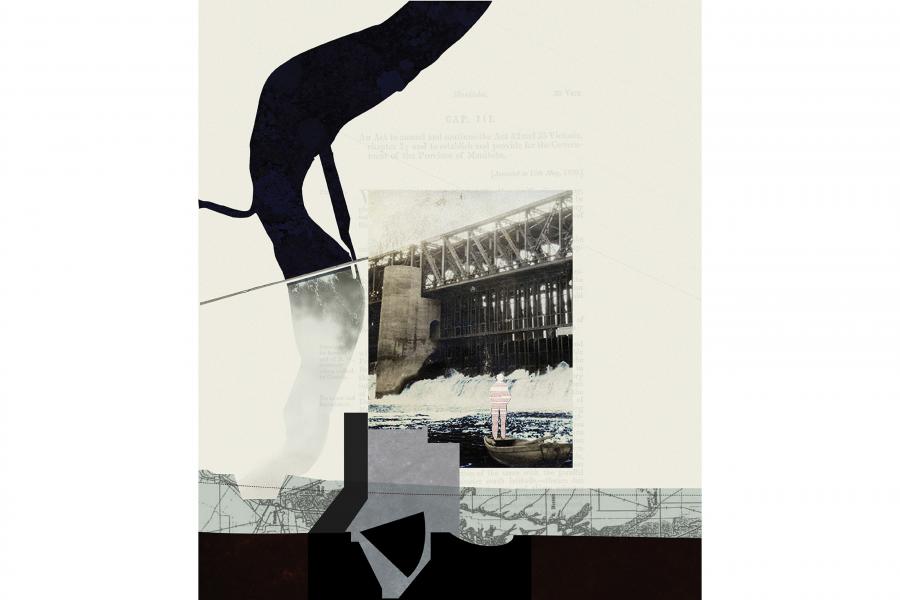
Fluid Boundaries: Territories, Urbanism and Ecology on the Red River Corridor
What are the social, political and ecological boundaries that inform our experience of space? This design thesis investigates the production of space through a multi-scalar taxonomy of boundaries, composed of human and natural systems.
To create a boundary, whether abstractly or materially, is an act of framing, delineating, organizing and territorializing space. From corporeal to social bodies, and from political to ecological systems, architects, as spatial designers, must navigate the complex and interrelated circumstances that define our relationship to spatial environments. This thesis posits an alternative definition of boundaries, one that retreats from binaries imposed by the frame in favour of a relational approach to defining space. Instead of focusing on the enclosure, this thesis speculates on the permeability and fluctuation of the boundary condition as a threshold and a frontier formed from merging edges; a hybrid zone defined by unique and variable conditions.
Historical delineations of territory have structured land use and infrastructural systems that actively curate the contemporary urban environment. If boundaries are instrumental in composing and stabilizing our perception of space, then architecture is fundamentally political in its capacity to materialize the systems that organize daily life. What agency does architecture have in an environment constructed by unsustainable environmental policies and upheld through codified boundary conditions?
The research for this design thesis will focus on the Red River Corridor in Winnipeg, Manitoba where pre-treaty boundaries still actively define the landscape. The natural boundary between land and water will serve as a point of departure for developing a study of social, political and ecological systems that operate along the corridor. The Red River, as it flows through Winnipeg, exists in Treaty 1 Territory. It was populated by Indigenous, Metis and European people who have shaped the physical and social geography of the land. While the division of land through zoning and private property may appear innocuous, these systems are built upon political ideologies deeply embedded in the culture. Many policies that determine land use are driven by economic imperatives with little regard for sustainability. Furthermore, historical policies have intentionally disenfranchised Indigenous Nations by reducing access to land, forced migration and disregard for traditional land stewardship practices.
It is the responsibility of architects, city planners, and landscape architects to design the urban environment. Perhaps architecture has an opportunity to renegotiate land use practices by offering an ecological approach to urbanism where the interface between person and environment encourages new perceptual experiences and a reevaluation of our collective responsibility to the Red River.
